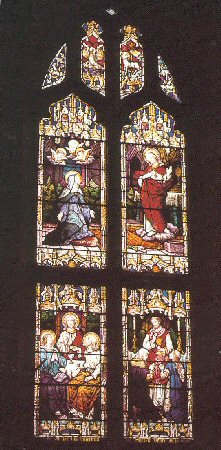The tradition of the St Brigit’s Cross also reaches back to Pre-Christian times (when it was made of straw). In Irish folklore rushes were associated with childbirth and were laid down when a woman was giving birth…
(and also for animals).
The making of the cross is therefore associated with Spring and birthing (even of the year). It was a symbol of protection and this was also a feature of the Celtic goddess – as was healing – a major attribute of Brigit, as can be seen from the plethora of Brigit’s healing wells around the country.
Her miracles are mainly associated with healing: note the tales of her healing the blind nun, Dara, and the leper, through drinking milk: her miracles of multiplication of food, milk and beer have resonance with Christ’s miracles at the wedding feast of Cana.
It was said that when Brigit applied to a pagan chieftain for some land on which to build her first monastery, that he mocked her: you can, he said, have as much land as can be covered by your cloak. Brigit laid down her cloak on the ground, and it expanded exponentially until it covered much more land than she required. And so her monastery was built and the chieftain became a Christian believer.
It was in explaining the symbol of the Christian Cross to another pagan chieftain that the St Brigit’s Cross became a legend.
… more later …
